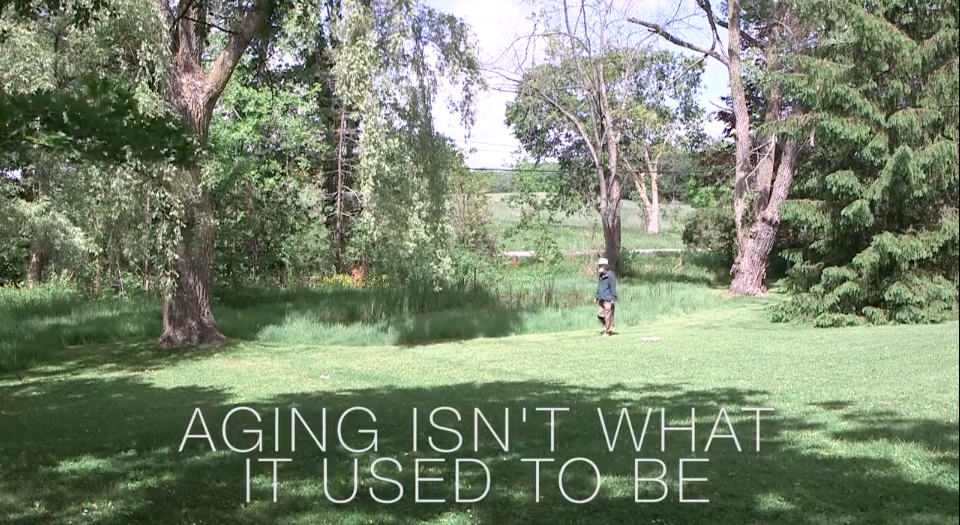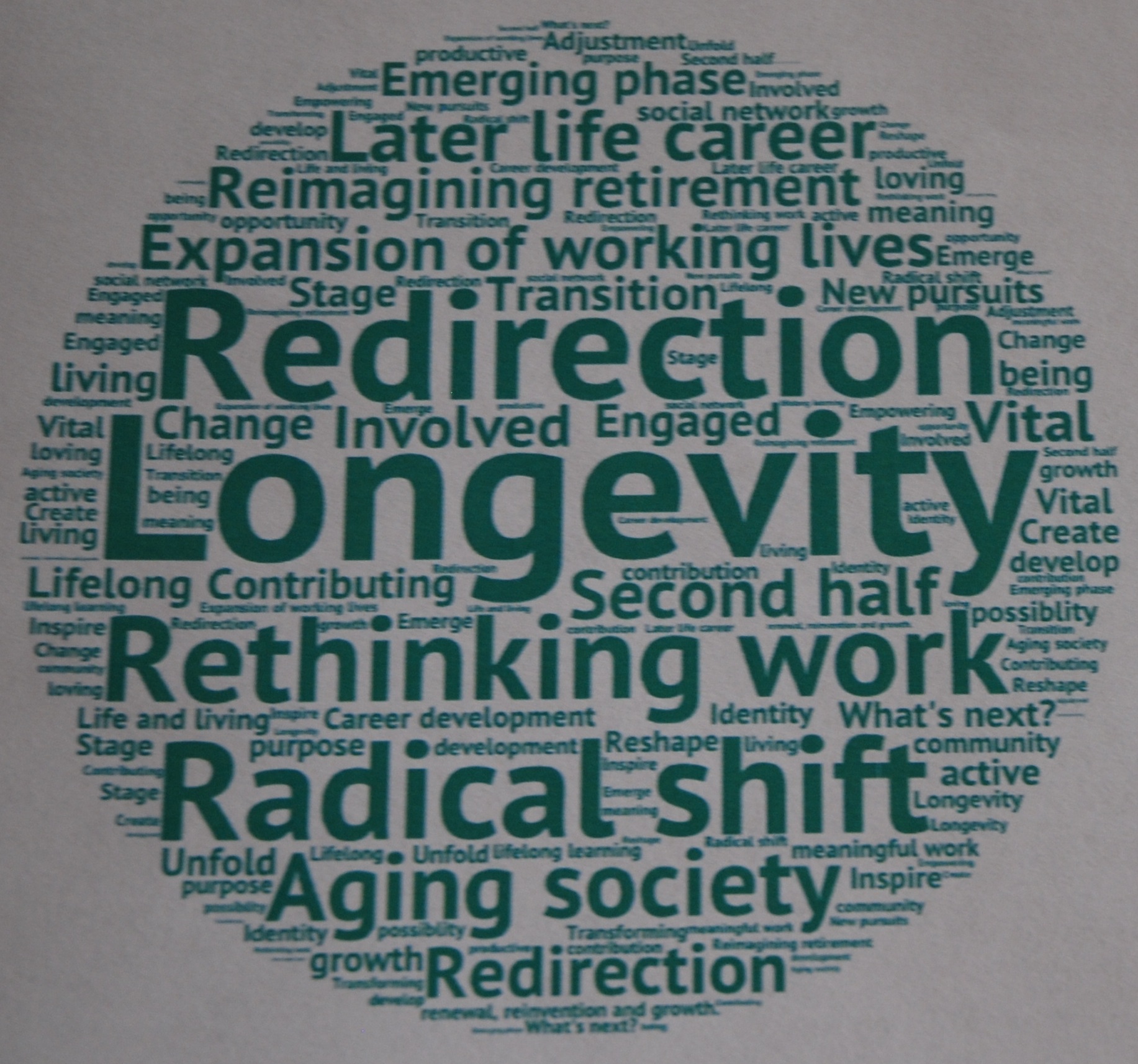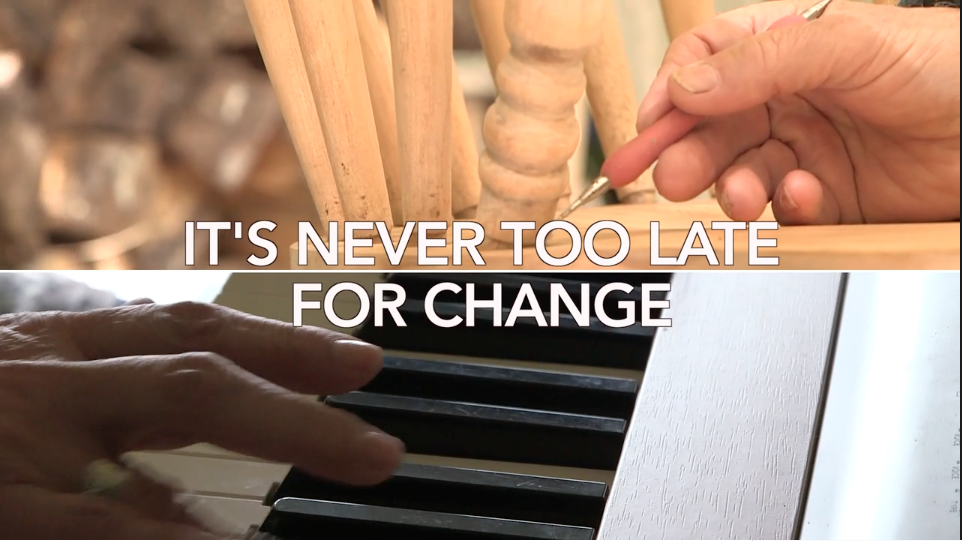Seven Dimensions of Active Aging
Posted by suzanne on Apr 30, 2017
Thanks to our aging population, increasing numbers of people are reaching mid-life. They have made it to a certain age and realize they need step it up a bit to maintain their health. Some decide they need to work harder in order to become healthier.
In fact, people are paying more attention to the benefits of healthier, more active lifestyles across the lifespan. It is possible to improve health by working at it. The objective is for people to have not only increased lifespans, but increased healthspans. The approach of using the seven dimensions of active aging can help.
The seven dimensions of active aging is a model for health and wellness. I often share this model when people are interested in learning more about health, wellness and aging and want to understand how to live fuller, healthier lives. This model helps people to design a rich, well-rounded lifestyle and set goals for health and wellness.
The seven dimensions of active aging are the key areas to be aware of for healthy aging in order to improve the quality of life as individuals age. The seven dimensions of health and wellness are:
- Cognitive – brain health
- Physical – body fitness and sexuality
- Psychological – emotional health
- Social – relationships and social connections
- Spiritual – divine, psychic and transcendent
- Occupational – vocation, work and calling
- Environmental – the natural and build world
With this holistic approach to health and wellness, these dimensions are interconnected to create the whole person and their life. Being active and engaged helps individuals by stimulating at least one, and often, many of these dimensions. It is important to live a balanced lifestyle so that each of these dimensions are developed or stimulated. This is what individuals strive to achieve.
The Canadian population is aging and there are more older adults than previously. People are also living longer today than ever before. They want to live longer and healthier lives. They want to maintain or even improve their health and are paying more attention to health and wellness in order to achieve health-related goals and objectives. Healthspan is very important. The seven dimensions provide a broad perspective of the best ways to think about health and wellness. In addition, the dimensions indicate the areas for improvement in order to live healthier, more satisfying lives.

Category: Aging, Aging Population, Health and Wellness, Life and Living, Longevity, Relationships, Work
 Post Tagged with Aging, Aging Population, Education, Engagement, Health, Healthspan, Lifespan, Seven Dimensions
Post Tagged with Aging, Aging Population, Education, Engagement, Health, Healthspan, Lifespan, Seven Dimensions Freedom of R & R, or to Continue Working
Posted by suzanne on Apr 12, 2017
There is a realignment of work and retirement in society as the population ages. It is a growing trend. Older adults are continuing to work past traditional retirement age.
CBC’s The National followed a couple of Canadians as they reflected on their decision to keep working into their later years. They found work opportunities for their ‘next act’ that help generate an income and maintain their lifestyle. Furthermore, their work is personally fulfilling and meaningful to their community.
Benefits go beyond the paycheque; working keeps people active and engaged. It was also nice to hear another perspective on the benefits of hiring mature workers.
I coined the term redirection to refer to the new stage of career as people transition into new pursuits and occupation to stay engaged and continue to work. Redirection is an alternative to retirement. It is an exciting time of life. New possibilities are investigated and explored. Older adults discover that their skills and competencies are transferable. My new documentary film explores five people’s experiences with redirection.
CBC News discusses the trend towards delayed retirement. Provinces like Nova Scotia and New Brunswick are already rethinking and implementing policy to address this new trend.
It is time to rethink government policy to consider the ways people are and can work longer and what this means for social structures and institutions in Canada.

Category: Active Engagement, Aging Population, Aging Workforce, Career, Economic Issues, Family, Health and Wellness, Intergenerational, Life and Living, Longevity, New Retirement, Relationships, Social Policy, The Redirection Project, Work
 Post Tagged with Aging Population, Business and Seniors, Documentary Film, Employment, Experienced Workers, Finance and Economics, Health, Income and Lifestyle, Later Life Work, Mature Workers, Mature Workforce, Meaningful-Later-Life-Work, New Retirement, Redirection Project, Retirement Trends, Skills, The Redirection Project
Post Tagged with Aging Population, Business and Seniors, Documentary Film, Employment, Experienced Workers, Finance and Economics, Health, Income and Lifestyle, Later Life Work, Mature Workers, Mature Workforce, Meaningful-Later-Life-Work, New Retirement, Redirection Project, Retirement Trends, Skills, The Redirection Project Older Workforce, Aging Consumers
Posted by suzanne on Feb 10, 2017
The population is aging in Canada as the baby boomer generation approaches and enters their later years. In a similar vein, the Canadian labour force is aging.
The aging population and labour force affect the Canadian economy. Policy makers, economists and government are concerned about how this will impact the economy.
Canada’s population growth is dependent upon the fertility rate, death rate and rate of immigration. Fertility rates have decreased over the decades as women have fewer children. Canadians are living longer. Immigration policy in Canada aims to bring more people into the country who can contribute to productivity and growth and compensation for the low fertility rate to keep the economy strong.
However, government, policy makers and economists do not fully recognize that older workers are eager to work and continue to work, in order to contribute to their communities. Older workers are skilled and experienced workers. They have communication, interpersonal and problem solving skills and have developed their ability to work with others. All of these skills are essential in the workplace today.
Organizational Level
As the populations ages and the workforce becomes older, all levels of society are impacted by demographic change. Importantly, this impacts organizations who are worried about a chronic labour shortage resulting from a rapidly aging population. Organizations have identified skill shortages in different roles across various industries. This is a top priority for business leaders.
Around the globe, other countries are innovating to address these concerns. These countries believe that the best way to adopt a successful aging strategy is to realize that aging is an opportunity.
One example is Japan, where policy makers have been steering the growing number of healthy 60- and 70 year olds away from retirement into work. These mature workers are taking on work roles and this makes them productive members of society. They hold jobs ”that otherwise would be impossible to fill as the population shrinks.” 1
Furthermore, an entrepreneurial focus on the aging demographic, with products and services to support aging, ensures that aging is a benefit that broader society can reap.
Although consumer spending growth overall is weak in Japan, economists at UBS Securities there say they believe the expansion of the senior market could more than offset any declines that come from a shrinking population, at least for a time.2
For Japan, the way forward is clear. For more, visit Aging Gracefully in the Wall Street Journal.
Footnotes:
1,2Schlesinger, J. M. & Martin, A. (2015). Entrepreneurs are exploring robotics and other innovations to unleash the potential of the elderly. Aging Gracefully: Graying Japan Tries To Embrace the Golden Years.

Category: Aging, Aging Population, Aging Workforce, Business, Economic Issues, Longevity, Services for Seniors, Social Policy, Work
 Post Tagged with Aging Labour Force, Aging Population, Employment, Finance and Economics, Mature Workers, Mature Workforce
Post Tagged with Aging Labour Force, Aging Population, Employment, Finance and Economics, Mature Workers, Mature Workforce Mature and Experienced Workers
Posted by suzanne on Feb 1, 2017
Older adults are continuing to work into their later years. They work for meaning, purpose, engagement, stimulation…and a paycheque.
Some individuals retire, then decide it is time to go back to work.
This is a beautiful video telling the story of one woman who retired, then decided to keep working into her later years.
Mature and experienced workers have a lot to offer. It is challenging and rewarding to redirect into new occupational pursuits.

Category: Aging Workforce, Career, Economic Issues, Longevity, New Retirement, Relationships, Work
Knowledge Sharing: Later Life Career
Posted by suzanne on Dec 8, 2016
 Redirection is an alternative to retirement. A large and growing proportion of older adults are choosing to work past what has traditionally been thought of as ‘retirement age’. This represents a significant shift in our society.
Redirection is an alternative to retirement. A large and growing proportion of older adults are choosing to work past what has traditionally been thought of as ‘retirement age’. This represents a significant shift in our society.
The Redirection Project examines this new and emerging social trend. Results of the research will be shared in January. First, a webinar will be held on January 12th, 2017. Sign up here. Second, there is a presentation at Cannexus17 in Ottawa on January 23rd. Sign up here.
The documentary film Redirection: Movers, Shakers and Shifters discusses these issues and portrays the stories of five adults who found second or third careers after age 50. The English and French trailers of the film are available. The documentary film is been screened through feature presentations around the country to great acclaim.

Category: Active Engagement, Aging, Aging Workforce, Career, Economic Issues, Longevity, New Retirement, Research, The Redirection Project, Work
 Post Tagged with Aging, Aging Labour Force, Aging Population, Cannexus conference, Documentary Film, Employment, Engagement, Experienced Workers, Finance and Economics, Income and Lifestyle, Later Life Work, Mature Workers, Mature Workforce, Meaningful-Later-Life-Work, New Retirement, Redirection Project, Research, Retirement Trends, The Redirection Project
Post Tagged with Aging, Aging Labour Force, Aging Population, Cannexus conference, Documentary Film, Employment, Engagement, Experienced Workers, Finance and Economics, Income and Lifestyle, Later Life Work, Mature Workers, Mature Workforce, Meaningful-Later-Life-Work, New Retirement, Redirection Project, Research, Retirement Trends, The Redirection Project Documentary on Later Life Career
Posted by suzanne on Oct 17, 2016
There is a shift surrounding later life with the extension of working lives. In fact, both work and aging have changed a lot compared to earlier times. Specifically, the nature of work has changed, people are working longer, and people are aging differently.
People are living longer than in previous generations. They are thinking differently about their work and occupation. Work fills various objectives for individuals.
The documentary film “Redirection: Movers, Shakers and Shifters” shows the experiences of five people age 50 and older as they moved into second or third careers. The film is being released through feature presentations. The one minute trailer is available for viewing.
What will later life work look like for you? What’s next?

Category: Aging, Aging Population, Career, The Redirection Project, Work
Work and Aging: Symposia
Posted by suzanne on Aug 29, 2016
Work and occupation are important across the life course. It is a great thrill to share the most recent research on work and aging at the upcoming CAG annual scientific and educational meeting to be held in Montreal, Quebec. At this year’s conference, I am chairing two Symposia on work and aging. I have invited some esteemed scholars to present their work. The Symposia are to be held on Saturday, October 22nd, 2016.
During the first Symposium, I will be discussing the Redirection Project. During the second Symposium, I am sharing the documentary film Redirection: Movers, Shakers and Shifters which helps bring key issues from my Redirection Project to a broader audience.
Symposium I: Policy Imperatives for Later Life Work
Symposium II: Movers, Shakers and Shifters: Later Life Career Redirection
It is very exciting to have scholars presenting on issues surrounding work and aging and gratifying to see this much attention devoted to work and occupation as people age at CAG. As a broad gerontological topic, work and aging is particularly relevant and timely as the large cohort of baby boomers approach later life and gain their own perspective on being mature and experienced workers.

Category: Aging, Aging Population, Aging Workforce, Career, Economic Issues, Longevity, Research, The Redirection Project, Work
Extension of Working Life
Posted by suzanne on May 25, 2016
 People are working during later life. This is a new social trend and it is occurring as the Baby Boomers enter their later years. Recent surveys and polls all point to this shift in Canada.
People are working during later life. This is a new social trend and it is occurring as the Baby Boomers enter their later years. Recent surveys and polls all point to this shift in Canada.
This trend is occurring for many reasons. Some people cannot afford to retire. They need to pay bills. They need to be gainfully employed past traditional retirement age. They have not saved enough to retire. They are in debt. In other words, they cannot retire and live on a fixed income.
CBC Radio’s The Current highlighted the challenges of some of these individuals. Listen to the podcast.
Other people want to continue working. They gain a great deal from their paid work. For example, work provides self worth and self-esteem, mental stimulation, physical activity and social relationships. Some of these individuals might have retirement savings, so income generation is viewed as a benefit but it is not the primary motivation. They might be professionals who are highly educated. They believe they have more to contribute; they are not ready to retire.
When I started conducting the Redirection Project and investigating later life career development, career shift and career extension, I recognized that there is a dichotomy among older workers. Some must work; some want to work. It is great to hear from older adults about their diverse experiences (and the surveys are still available for participation). Both of these experiences are important to understand; hence, I developed the on-line surveys to reflect both sets of circumstances. The fact is that socio-economic circumstances have changed a great deal since the retirement system was developed.
Indeed, paid work during later life is important. Paid work represents many things to individuals. Motivations for later life paid work are complex. This new trend is a big shift from the previous model of retirement. It is a big shift within workplaces as well. Policy to address this social change must be carefully handed.
This is why the qualitative and quantitative datasets collected through the Redirection Project are critical for gaining a better understanding of later life career development and employment experiences and informing social policy, organizational programs and career development practice. For more information about the Redirection Project, please visit www.MyRedirection.com.
Redirection Story Contest
Posted by suzanne on Apr 30, 2016
As part of the Redirection Project, we held a story contest. We heard from Canadians who had interesting stories to share. We were excited to read the amazing stories about later life career shifts and redirection.
The Story Contest has concluded and our work on the film is beginning. For updates on the film, please follow us on Twitter: @myredirection and @mareorientation.
Thank you to everyone who participated in Redirection Stories.

Category: Aging
Uncovering Stories About Redirection
Posted by suzanne on Mar 23, 2016
 Courage. Change. Challenge. Opportunity. Reinvention. Empowerment. These words come to mind when thinking about new career directions during the second half of life.
Courage. Change. Challenge. Opportunity. Reinvention. Empowerment. These words come to mind when thinking about new career directions during the second half of life.
More people are expecting to work longer or are considering later life employment. In fact, greater longevity has combined with a rethinking of work and income options.
As a new stage of later life career development, redirection helps individuals think about this transition process. It assists with the steps involved in making a career shift.
In addition, redirection helps identify self-awareness and self-knowledge. Reflection is required during this career stage. It helps people see how far they have come and where they are going next.
The redirection story collection continues until March 25th, 2016. The online survey will be open until the end of May 2016.
To participate in the Redirection Project, please visit www.MyRedirection.com.

Category: Aging, Aging Workforce, Career, Economic Issues, The Redirection Project








